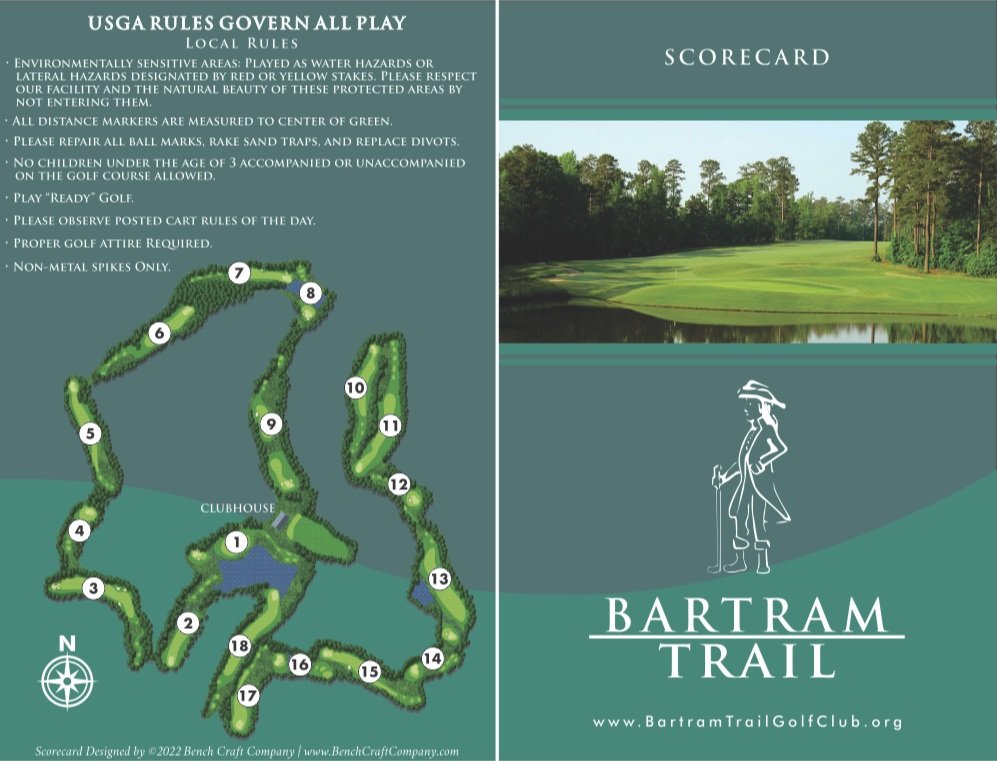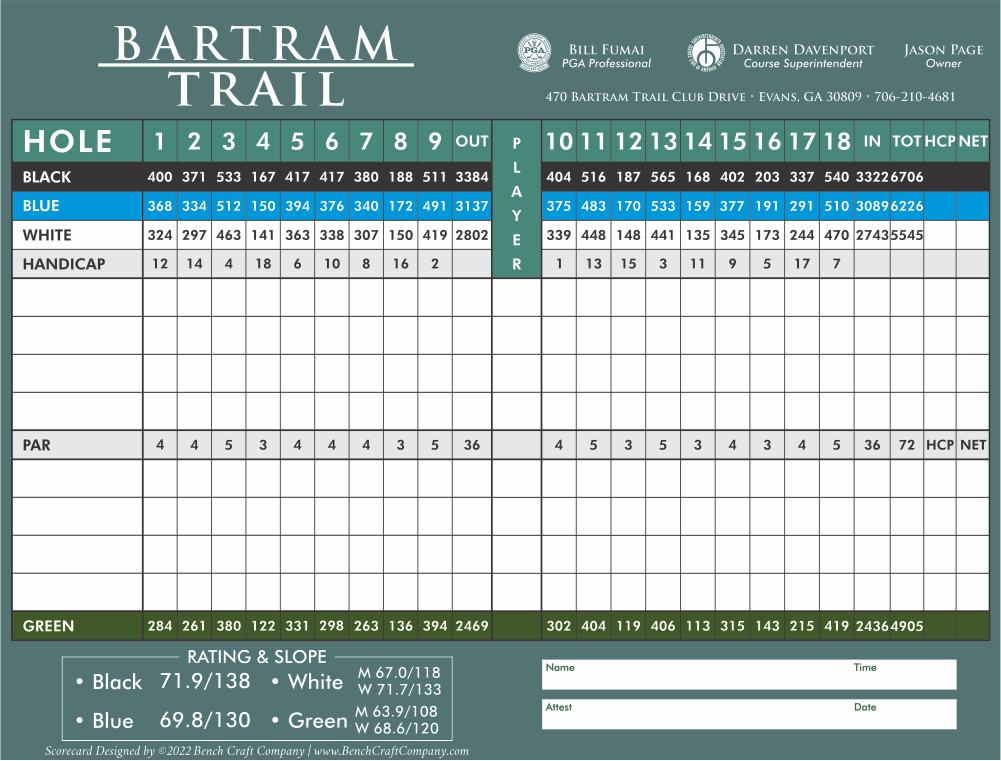About Us
William Bartram is known by many as the first American Naturalist and is responsible for cataloging most of the native flora in the Southeastern United States. It is his legacy that inspired the dedication to conservation exhibited in the Bartram Trail golf course, which endeavors to embrace its relationship to the environment of the lower piedmont and upper sand hills through its development and maintenance standards, as set forth by Audubon International.
“When I am travelling…I chiefly search out, not that I naturally delight in such solitudes, but entirely to observe the wonderful production in nature of the transformations and transmutations.”
– William Bartram
He was born April 7, 1739, in Kingsessing (now Philadelphia, Pennsylvania) and died there in 1822. He was the fifth son of Royal Botanist John Bartram. Joining his father to explore the Southeast (1765-66), the Bartrams discovered hundreds of specimens including the Venus Fly Trap. They also found a previously undiscovered tree and named it for Benjamin Franklin (Franklin tree or Franklinia alatamatha). The tree is now extinct in the wild and the only known specimens come from trees the Bartrams brought back with them.
Among the people Bartram called friend were Benjamin Franklin, Thomas Jefferson, and John Fothergill, an English surgeon whose greatest contributions were in the field of botany. Fothergill, a major inspiration for William’s second trip, encouraged young Bartram to return to the remote areas to find new specimens.
William’s solo journey spanned four years beginning in 1773 and covered parts of present-day Florida, Georgia, South Carolina and North Carolina. Sailing to Charles Town (now Charleston) South Carolina, he used this city as base for the next four years. In April of 1775 he left Charleston for Augusta and continued north from Augusta into Cherokee country. He reached the village of Cowee Watauga (in present-day North Carolina) in May, 1775, and returned to Savannah. In November, 1776, he received an urgent appeal from his ailing father to return to Philadelphia. The elder Bartram died shortly after William’s return.
During his “walk in the woods” Bartram recorded many observations in his personal journals, diaries of a sort that inspired many noted authors including Henry David Thoreau, William Wordsworth, Samuel Taylor Coleridge, Charles Brockden Brown, James Fenimore Cooper and John Muir, founder of the Sierra Club. He is one of the first people to whom the term “naturalist” is applied.
In addition to the scientific aspects of the journals, William Bartram’s writing also serves as some of the earliest descriptions of the culture of both the Cherokee and Creek Indians. He also expresses beliefs, unusual for the time, about man’s interrelation with nature, believing that man shares certain emotional and intellectual bonds with all living things.




